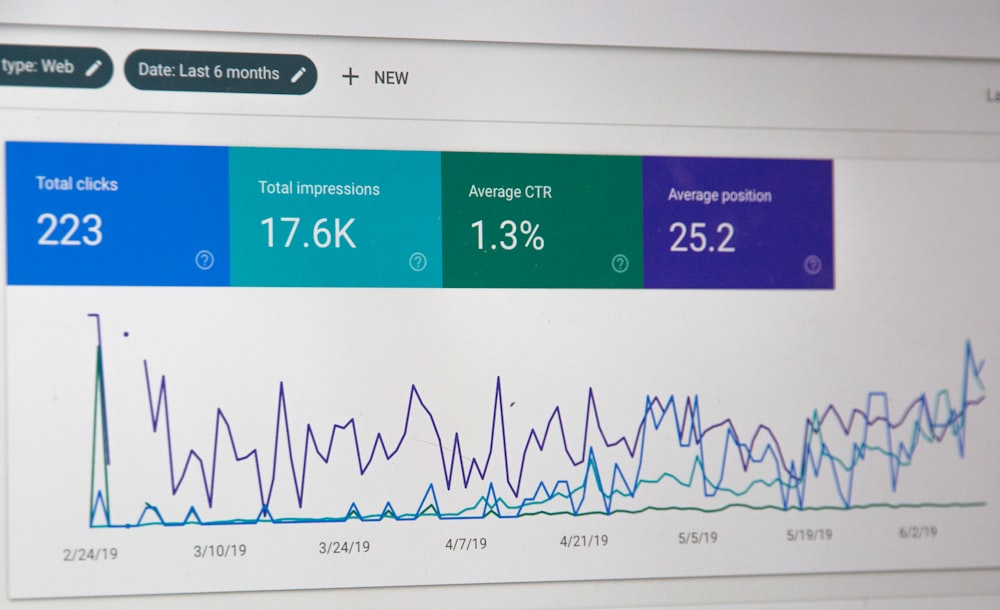Don’t know a thing about dental website SEO? (That’s Search Engine Optimisation, by the way). We’re here to help!
It might seem like SEO is complicated, time-consuming and unnecessary. However, if you want your dental website to appear higher in Google search results, you need to focus your efforts on optimising your website. SEO simply ensures the most relevant and helpful results appear every time someone searches via Google.
If you’re highly reviewed, either on your website or on social media, you are considered more trustworthy. Therefore, if Google thinks you are a reliable source of information, you are more likely to rank higher on Google.
With SEO always changing alongside the dental industry, you might be scratching your chin in confusion thinking about it. If you want to start optimising your dental website, read our comprehensive 14-step guide to dental website SEO.
1) Do some keyword research
What services does your dental practice provide? It is important to note these down, as it is the stepping-stone to good SEO. Whether cosmetic dentistry or fillings, you most likely have a service you specialise in.
Make sure that these keywords are present across your website content, but keep in mind what people actually search for. Someone likely has a purpose for searching, such as “tooth removal dentist”, that they want a result for. You should be mindful of their intent when searching.
2) Optimise your homepage
If you have your keywords, then the next step is to focus on them on your homepage. Your page title is the best way to start, as it appears at the top of your web browser and in Google search results.
As your page title is arguably the most important, the keyword you use in it should be as well. You should focus your efforts on the locality of your dental practice. Aim for fewer than 65 characters, include the name of your practice and the location (Manchester Dentists – Manchester Dental Practice).
Similarly, your meta description should be fewer than 150 characters, containing vital information. Location, practice name, services and a call to action should suffice (‘call us now!’).
Content on your website should be optimised for your keyword focus and shouldn’t be below 1000 words. It can be informational, possibly describing your services, but should be easy to read and tailored appropriately.
3) Organise your dental service pages
If you offer multiple services, don’t pile them all into one page! You will rank on Google for each service when you have them on separate pages, which is more beneficial. By doing so, you can give detailed descriptions of each service you provide.
Ensure you have separate pages for your general dental services versus specialised services. Then you can have sub-pages, which are optimal for dental website SEO as they target industry-specific keywords.
Make sure you follow the same steps you did for your homepage, with your titles and meta-description.
4) Create/optimise your content pages
Keyword research comes in handy here, too. If you know what people are searching for, you can create relevant content. For example, if you know that people often wonder about the types of cosmetic dentistry available, you can create content to provide answers.
This will be best achieved by having a blog for your dental website, which can utilise keywords to provide information for patients.
In-depth is better, as SEO often dictates that longer content ranks higher, whilst also providing more information.
5) Google My Business Page
When someone searches for a dental practice locally, Google My Business will show the dental practice on Google Maps. This is often alongside contact information and Google reviews, which makes it one of the first things prospective patients will see.
When you create your Google Business Page, make sure to list your exact location and all of your relevant information. If you’ve listed yourself in other directories, make sure the information is consistent. Describe what your practice is, not what services it offers.
Include your categories (dentists, dental practice, cosmetic dentist), the more relevant the better. Make sure you have your opening hours listed also, as this is information patients will definitely be looking for.
6) Get yourself in directories
Though Google My Business is the most important directory you can list yourself in, there are others. Directories such as Yelp and Yell are easy to input your information into, though there are local options if you search for your area.
Having your contact information spread over a number of resources not only makes your website accessible, but also helps with SEO.
7) Inbound links
Inbound links are simply other websites providing hyperlinks to your website. These hyperlinks can contribute to your website being viewed as reliable and trustworthy. The more links you have (from trustworthy websites, preferably) the higher your ranking on Google.
If you know any other dental practices, then it would be helpful to post links to each other’s websites on blog posts. This is a convenient and mutually beneficial method that can help you boost your SEO.
8) Request referrals for your website
If your services are great, then you need reviews to show this to potential patients. One of the easiest ways to do this is to email patients asking them for a review. Google My Business reviews are some of the most effective, and the link can be posted on your website on in emails.
It is essential you make this process a part of your business, following up patients to leave reviews is the difference between being a standard business and a reliable one. Reliable businesses are rated more favourably by Google, so your efforts are definitely well-placed by leaving follow-up emails for reviews.
9) Research your competition
What keywords are your competitors ranking in? What websites are linking to theirs? A tool such as Moz Link Explorer, which can show you the backlink profile of any website (backlinks are hyperlinks on other websites that link to your own).
If you have a competitor who ranks in the top three on Google search, see how many backlinks they have or what type of keywords they are utilising. Do they mainly get ranked based on their content? If so, seeing the style of content they are putting out can give you a small advantage and help you stay on top of the trends.
10) Use Google Search Console and Google Analytics to track progress
If you want to know if your efforts are reaping rewards, you need to utilise Google Search Console. This will help you see where you’re ranking for specific keywords, alongside the search and click volume of each keyword. Rankings are valuable to check a couple of times a month. Checking too frequently won’t show the gradual results, therefore not being as beneficial.
Google Analytics can help provide insight into your dental website SEO in terms of traffic. Traffic simply refers to the amount of visitors to your webpage, though this can be broken down into more specific types of traffic. You’ll need to install Google Analytics into the pages on your website to use it.
Long-term trends are important in SEO more than a weekly check-up would be. Seeing how your ranking may change over time gives a greater indication of what you’re doing that helps or hinders SEO.
‘Goal Tracking’ can be set up via Google Analytics, specifically to see how many people interact with specific webforms.
11) Build a good website
All of the above steps will prove fruitless if you have a webpage that takes too long to load! Pictures with excessive loading times, complicated navigation and distracting graphics should be avoided.
Remember when we mentioned traffic? If people click on your website from directories, Google My Business or Google search results, make sure they stay on your website rather than closing the page immediately. The rate at which people click off your page rather than staying on it is called a ‘bounce rate’, and an easy-to-navigate website should avoid a high bounce rate.
12) Make your website mobile-user friendly
Most people accessing your dental website are most likely doing so from a smartphone. This means that your website should cater to that to avoid a high bounce rate. 3 seconds is considered the absolute maximum loading time before mobile-users decide your website isn’t worth their time!
If you compress your images and videos, remove unnecessary plugins and avoid complicated navigation then your website should load in optimal time. Don’t lose potential patients because you insist on having a picture that takes up all of your loading times.
Want to check if your website is mobile friendly? Check this Mobile-Friendly Test! You can see which areas of your website are incompatible with phone-users.
13) Be aware that results don’t happen overnight
The general consensus on SEO results can range, some believe it takes more than 6 months to appear on Google’s first page. However, consistency with the above steps could yield results much faster. Increasing visibility, even if small steps at a time, can be the difference between gaining potential patients and losing them.
14) If you don’t have the time, get a professional to help
All of these steps, although effective, might take more time than you have. Dental website SEO can’t be achieved overnight and takes consistency, so if you think you’re not up to it, why not ask us for assistance? If you’re looking to kick-start your social media marketing on Twitter, why not read 15 easy steps to create a Twitter account for a dental practice?







